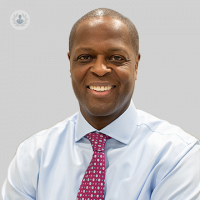Effective treatments and prevention strategies for tennis elbow
Written in association with:Tennis elbow, also referred to as lateral epicondylitis, is a painful condition It results from overuse or repetitive strain on the elbow’s tendons. Despite its name, it’s not exclusive to tennis players and can affect anyone engaging in activities requiring repetitive arm, wrist or hand motions.

What causes tennis elbow?
Tennis elbow occurs when repetitive motion or strain leads to small tears in the tendons attaching to the lateral epicondyle of the elbow. Common causes include:
- Playing racquet sports or other repetitive athletic activities.
- Jobs or hobbies involving repetitive hand or arm movements, such as painting, typing or gardening.
- Improper lifting techniques or overuse of wrist and forearm muscles.
Symptoms of tennis elbow
Typical signs of tennis elbow include:
- Pain or burning sensations around the outer part of the elbow.
- Weakness in grip strength, making it difficult to hold objects.
- Increased discomfort with activities like lifting, gripping or twisting motions.
What are the treatment options for tennis elbow?
The goal of treatment is to reduce pain, promote healing and restore function. Effective treatments include:
Rest and activity modification
Avoid activities that aggravate symptoms, allowing the affected tendon to recover. Rest is a crucial first step in managing tennis elbow.
Pain management
- Ice therapy: Applying ice packs to the affected area can help reduce pain and inflammation.
- Non-steroidal anti-inflammatory drugs (NSAIDs): Medications like ibuprofen can provide temporary relief.
Physiotherapy
A physiotherapist can design exercises to improve strength and flexibility in the forearm and wrist muscles. Techniques may include:
- Stretching exercises to relieve tension on the tendons.
- Eccentric strengthening exercises to rebuild tendon strength.
- Manual therapy or massage to improve blood flow and reduce tightness.
Braces or supports
Wearing a forearm brace or strap can help redistribute pressure away from the affected tendon, reducing strain during daily activities.
Advanced interventions
- Steroid injections: Corticosteroid injections can provide temporary relief for severe pain, though they may not address long-term healing.
- Platelet-rich plasma (PRP) therapy: PRP injections use your body’s growth factors to stimulate tendon repair.
- Surgery: In rare cases where conservative measures fail, surgery may be necessary to remove damaged tissue or repair the tendon.
Prevention strategies for tennis elbow
Preventing tennis elbow focuses on minimising strain and using proper techniques:
- Improve ergonomics: Ensure your workstation or tools are adjusted to minimise repetitive strain on the forearm.
- Warm-up exercises: Stretch and strengthen the forearm muscles before engaging in physical activities.
- Correct technique: Work with a coach or professional to refine your form in sports or repetitive tasks.
- Use appropriate equipment: Lightweight racquets, ergonomic tools or padded grips can reduce stress on the tendons.
- Take regular breaks: Avoid prolonged periods of repetitive motions by incorporating rest intervals.
Tennis elbow can be a persistent and frustrating condition, but with the right treatment and prevention strategies, it’s manageable. Addressing the issue early and adopting preventive habits can reduce the likelihood of recurrence. Consult a healthcare professional or physiotherapist for a tailored treatment plan to recover effectively and prevent future flare-ups.


